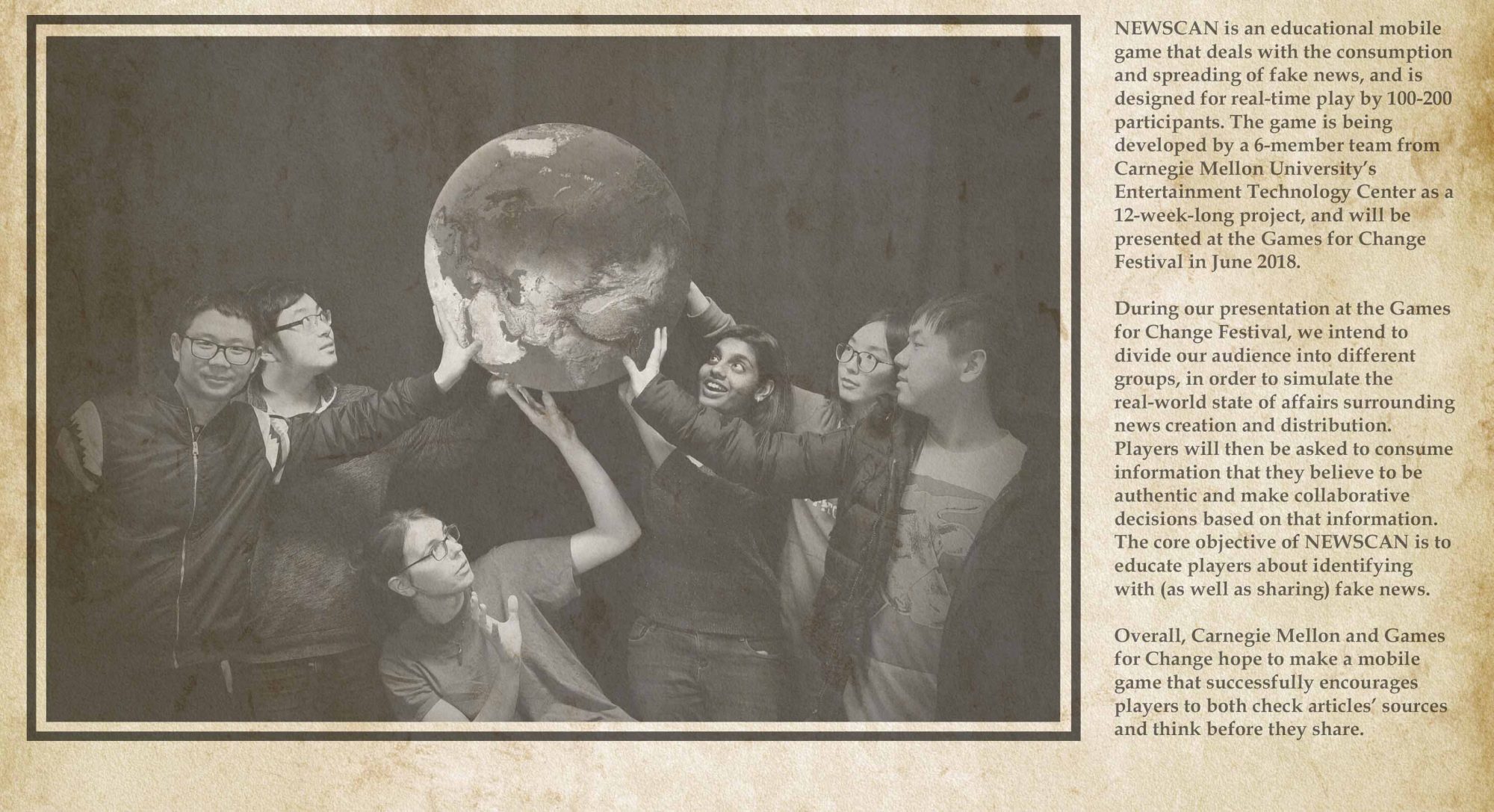As we moved into our project’s second week and locked down our core hours, we decided to create a composition box before doing anything else. This helped us solidify general choices we wanted to make in relation to art style (i.e. 2D), choice of platform (i.e. web-based mobile) and web-based, gameplay (e.g. displaying articles on a players’ mobile devices and asking players to determine whether those articles are genuine or fake by swiping left or right on their respective mobile devices), and stories or articles that we collectively felt would serve as a backbone for our project throughout development (e.g. Facebook’s decision to ask users to rank news organizations that they trust).
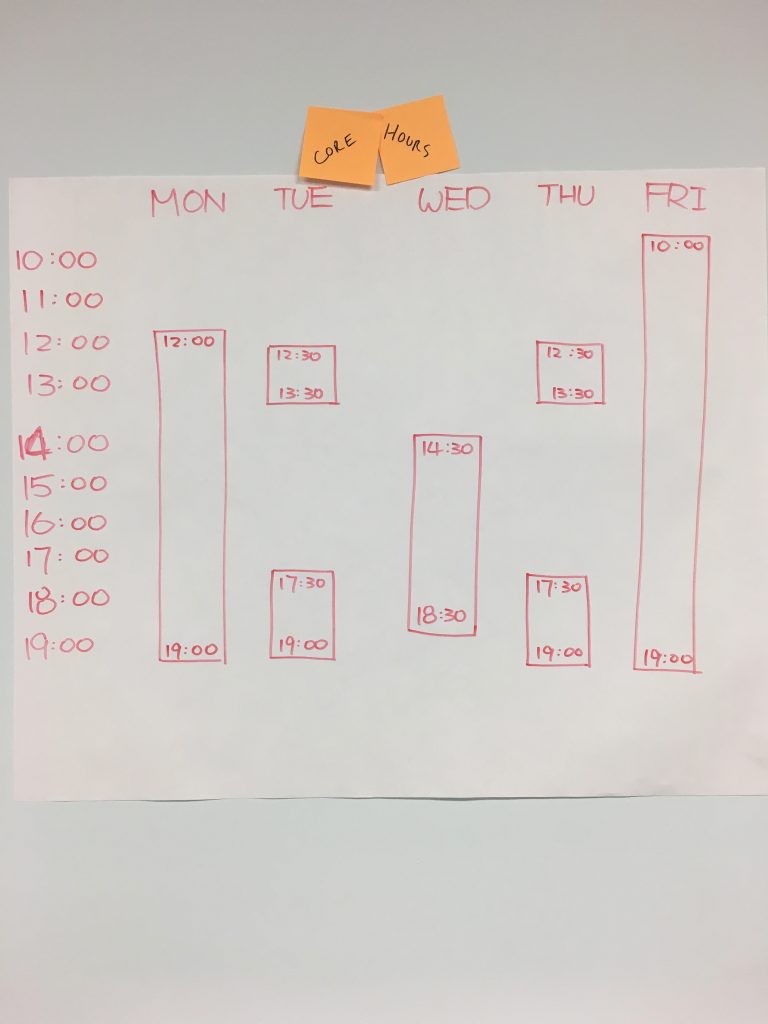
What’s more, the process of creating our composition box helped us determine our roles, who our audience is (i.e. Games for Change attendees who are experienced with playing games and interested in the topic of fake news), what we need to deliver to our client by the end of the semester (i.e. an hour-long interactive experience for roughly 100 people that teaches players about fake news and how to avoid sharing it, along with a design doc for that experience), what we needed to do for players (we’ve decided to focus on fostering communication between players, as well as keeping them engaged), and what we personally would like to take away from the development experience (for instance, we would all love to learn more about both how to design for a crowd and how to undergo the process of creating an educational experience).
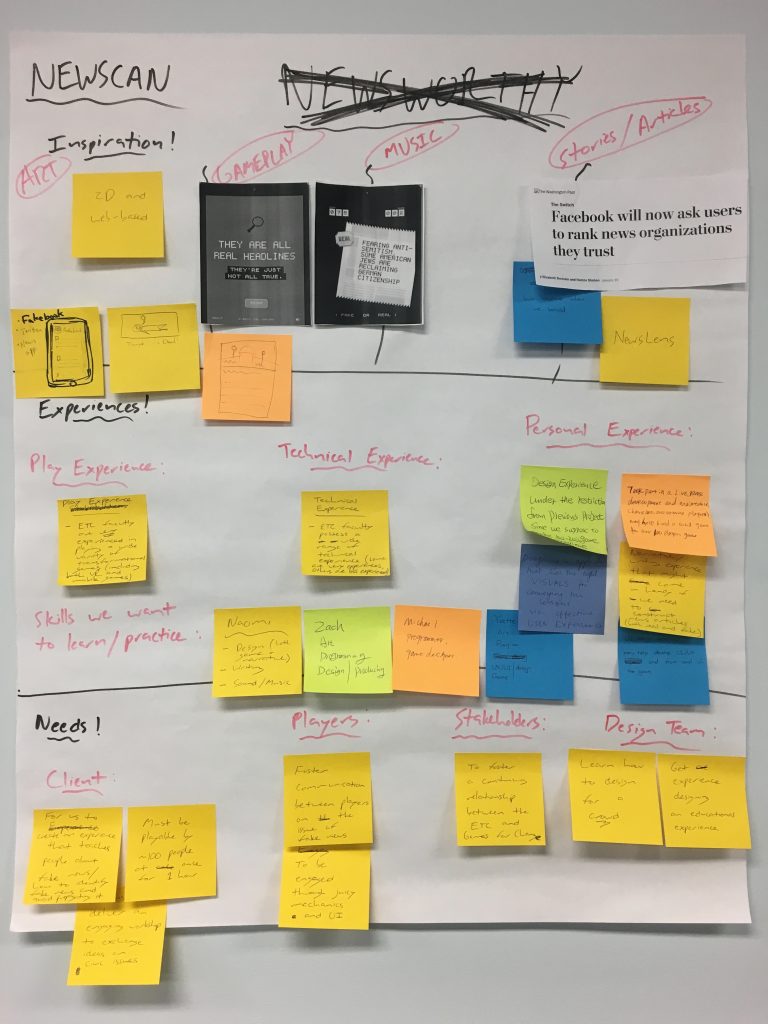
We then created a mind map to supplement and build on the concepts that we’d established in our composition box.
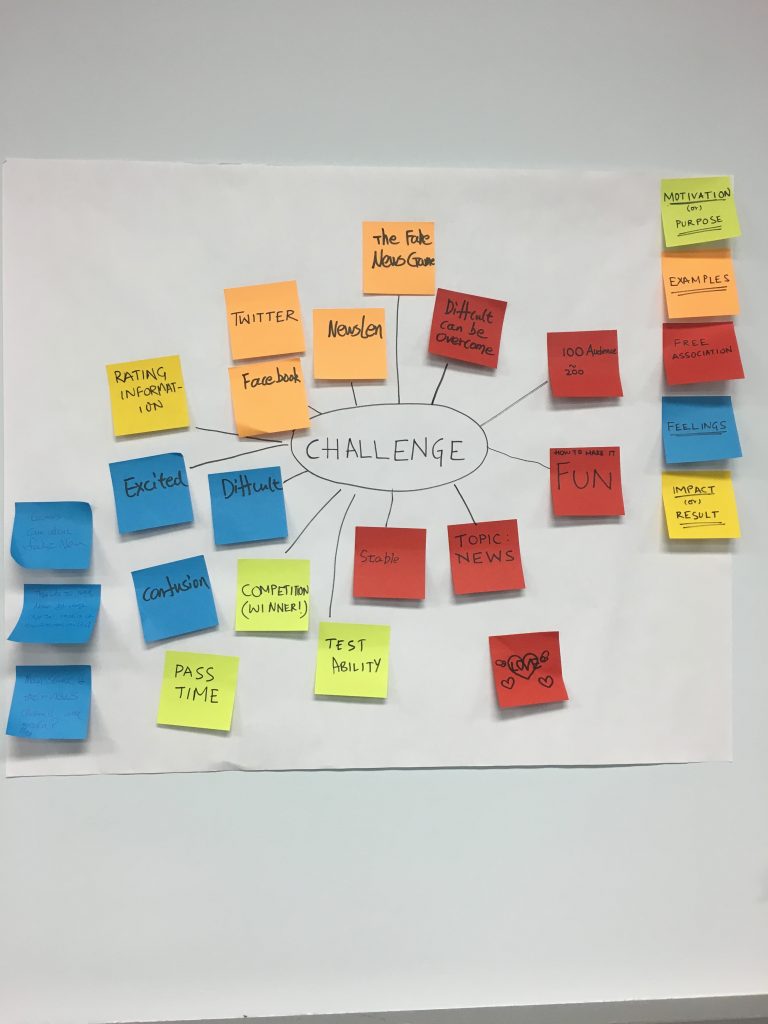
With the first major draft of our composition box complete, we headed into our second faculty meeting with much sturdier grip on a) the thing we wanted to build, and b) the what we wanted to accomplish by building it. During that meeting, our faculty advisors urged us to explore yet another important concept related to the topic of fake news: distraction. We were also urged to put a lot of thought into how exactly players would consume any news articles present in our experience (a point that our client would later echo).
Following this meeting, we assigned each member of our team to both conduct more research on the subject of distraction and brainstorm at least one rough game concept to share with the rest of the team when we next met.
Just some of the ideas that we ended up brainstorming included the following:
- You’re a citizen living in Europe during the months leading up to WWII; even though you (i.e. the player) know that WWII will occur if nothing is done to prevent it, the character you are playing as is won over by a steady barrage of news that squelches rumblings of the coming war.
- Players (who are divided into teams) must use their phones to sort through a steady barrage of ever-changing news articles and video footage (some fact and some fiction). Players tap on articles/videos to bring them to the front of their phone screens and swipe each piece of media up to put it on a larger screen in the front of the room (which acts as a visual metaphor for “sharing” the piece of media). There would be positive feedback/sound/music for sharing facts and negative feedback/sound/music for sharing falsities (which might then linger on the screen in the front of the room for longer). Players who share the most true stories win the game.
- A detective game in which players would be divided up into teams (possibly of three). One teammate would travel to different tables in the room with newspapers (or additional pieces of media) on them and use an iPad as a magnifying glass to scan the piece of media for clues as to whether or not it is fake. Then, a second teammate would analyze those clues, and a third teammate would put it all together.
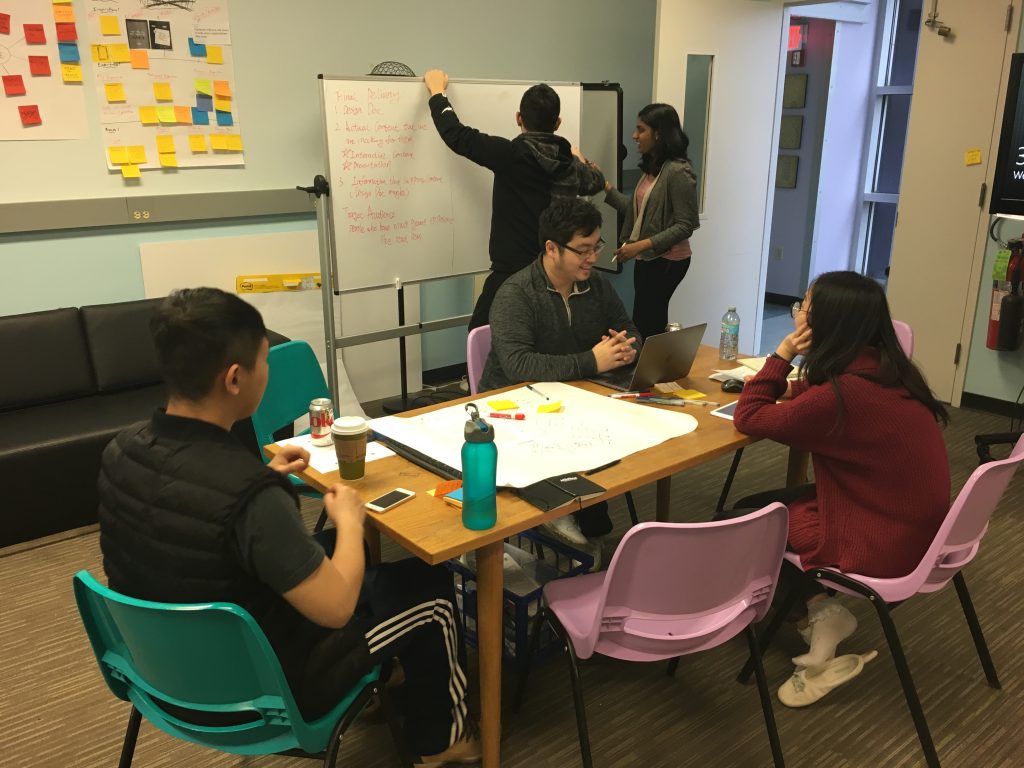
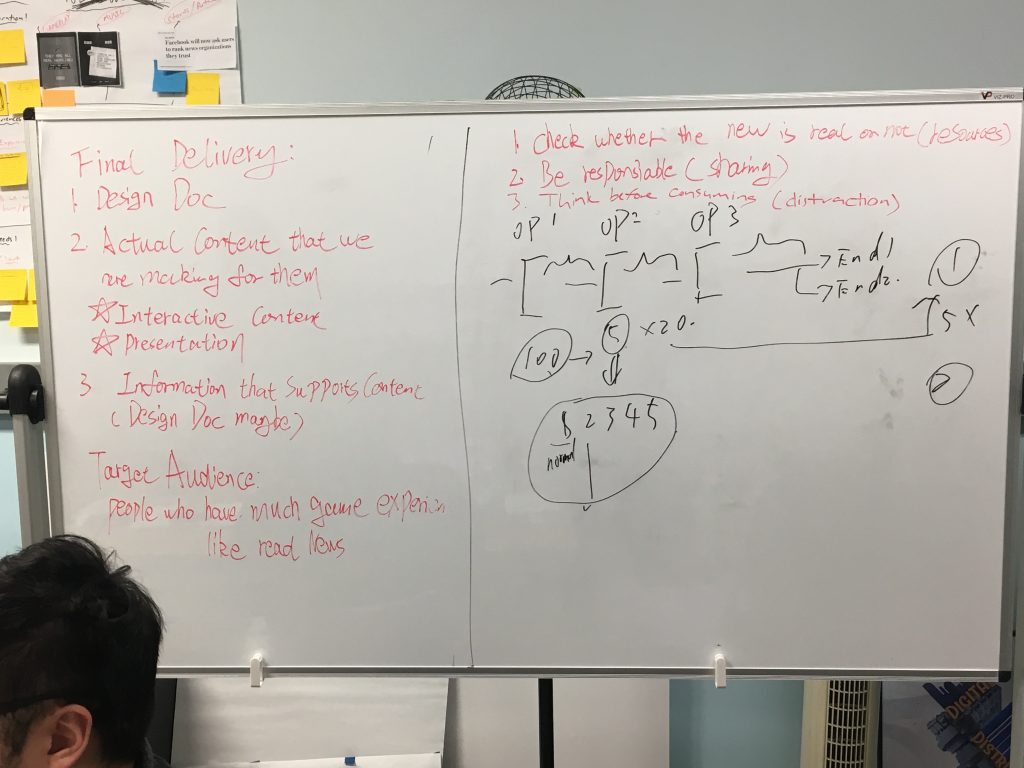
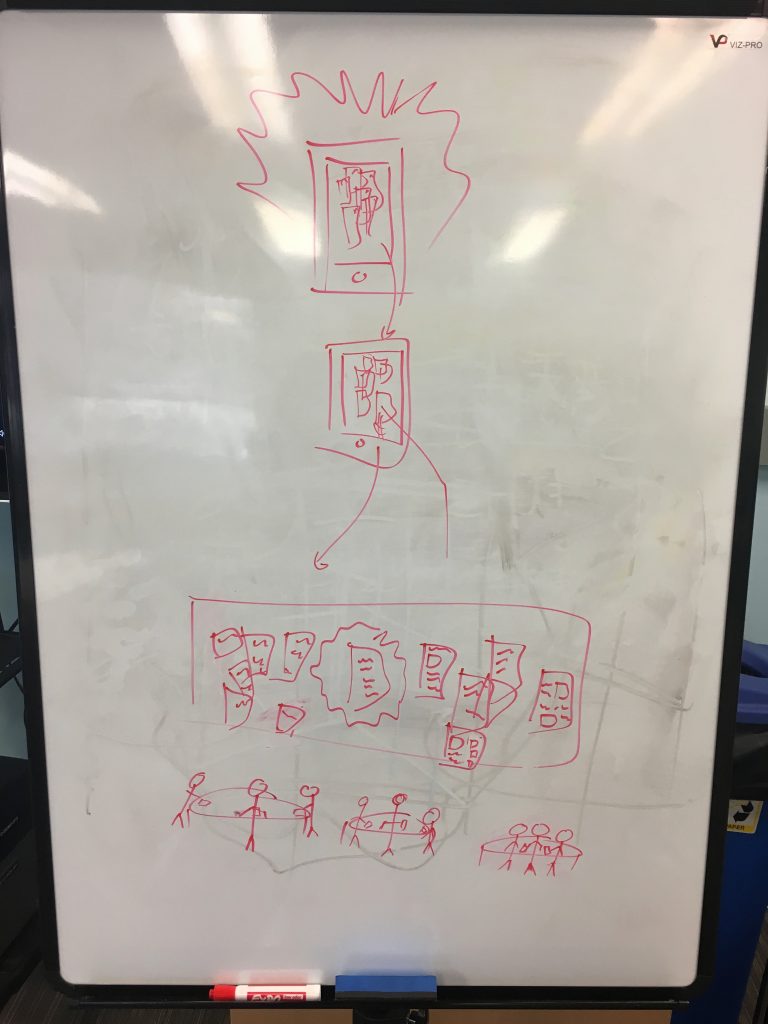
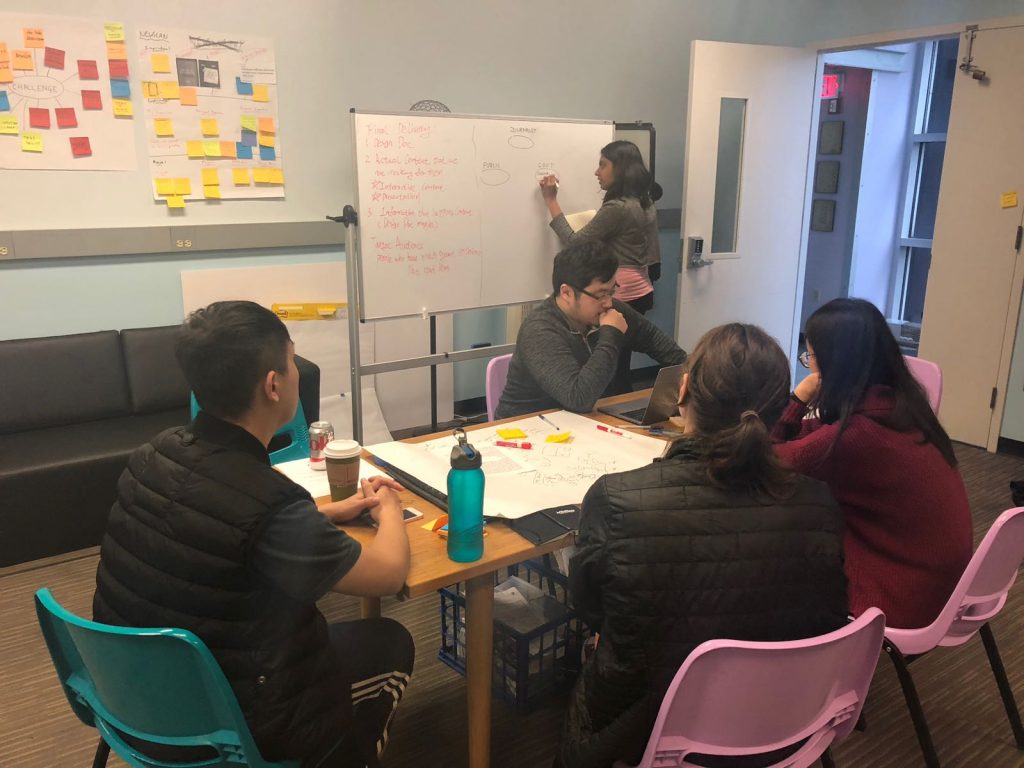
We then got feedback on some of those ideas from Eric Brown (the director of the Alice Project at Carnegie Mellon’s Entertainment Technology Center), who provided us with some key insight into our audience (which we may expand to include potential students of our Games for Change presentation’s attendees), the nature of fake news (i.e. that “fake news” can also consist of news pieces that manipulate readers with facts), and our need to design a game around specific learning objectives.
During our second client meeting, we got even more feedback on our current trajectory from Games for Change game designer Brendon Trombley.
In terms of game concepts we’d brainstormed, Brendon commented that he liked our WWII idea, and that we could consider combining it with elements of our other two major ideas. He also let us know that our audience might not be as experienced with games as we originally thought, and that we should be designing our final experience with the specific venue we’ve been given in mind. Additionally, Brendon related that examining “distraction” in a game might be difficult (but could be a good problem to tackle), and that the most difficult part of making a news-related game is content generation.
Overall, our meetings with Eric and Brendon prompted us to think harder about our audience and what we want them to learn from our experience, as well as how we’d like to take further advantage of the space we’ll be presenting in at the Games for Change Festival. So far, we’ve decided to expand our audience to “Games for Change attendees who are interested in the topic of fake news,” and we’ve decided that we want our audience to learn two things:
- How to identify whether or not an article is fake.
- The importance of refraining from sharing fake news.
What’s more, we have started to kick around the idea of combining physical and virtual elements in our experience by using physical news articles and an AR platform (such as Apple ARKit), which could help us bring a strong visual element to the concept of scanning and zooming in on news items.
Next week, we plan to present all of the general game concepts we’ve brainstormed to our faculty advisors before choosing several of those concepts to flesh out and prototype. If all goes well, we hope to conduct some quick play-tests with those resulting prototypes to see if we can glean more information about which game concept (or concepts) we should iterate on further.
